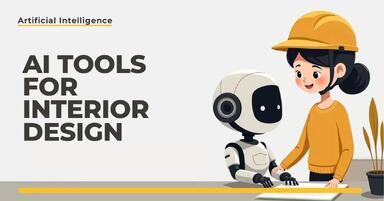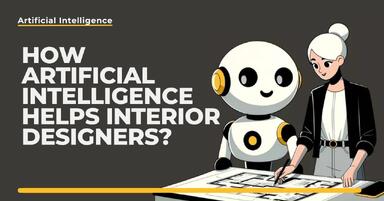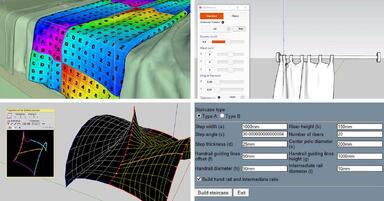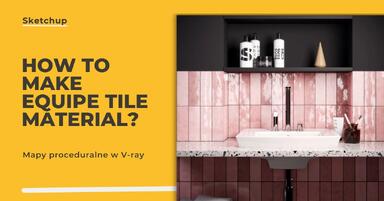Publication date: | Update date: 30-10-2024 | Author: Piotr Kurpiewski
Automatic Moodboard Generation Using AI
Artificial intelligence is revolutionizing the way moodboards are created, taking the process of gathering inspiration to a whole new level. With modern AI tools such as MidJourney, Stable Diffusion, and Mood Board AI, inspiring collages can be generated in just a few seconds, without the need for manual search and image selection. Discover how these innovative applications can streamline your design process, allowing you to focus on the creative aspects of work and providing an unlimited source of unique inspirations.
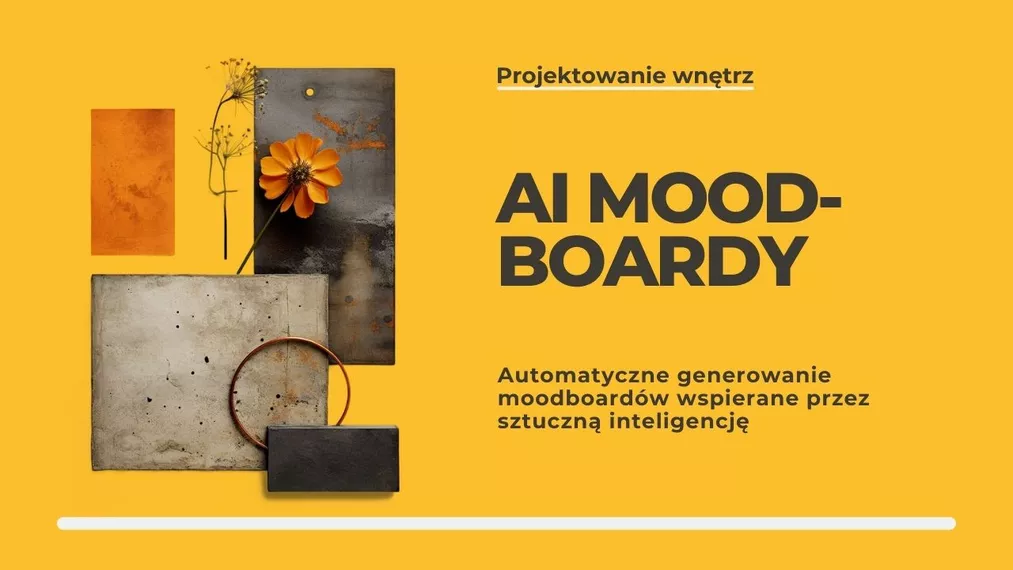
In the world of interior design, mood boards have always been a key tool for visualizing ideas and inspiration. Traditional methods of creating mood boards can be time-consuming and require gathering materials from various sources. What if we could automate this process and create a personalized mood board that perfectly represents our vision in just a few moments? Thanks to artificial intelligence, it's now possible! In this article, we'll explore how AI is revolutionizing the creation of mood boards, present the latest tools available on the market, and show how you can use them in your work.
What is a Mood Board and How to Use It in Interior Design?
A mood board is a collage of images, texts, and material samples aimed at conveying a specific concept or mood in a project. In interior design, mood boards assist in communicating with clients, defining style, and inspiring throughout the design process. If you want to learn more about the basics of creating mood boards and their role in interior design, we invite you to read our article: What Is a Mood Board and How to Use It in Interior Design?
Traditional Methods of Creating Mood Boards and Their Limitations
Until recently, designers created mood boards manually, using cutouts from magazines, material samples, and their photographs. This creative process was time-consuming and limited by the availability of physical materials. Digitization introduced tools such as Photoshop or Canva, which facilitated the creation of digital mood boards but still required manual search and selection of elements.
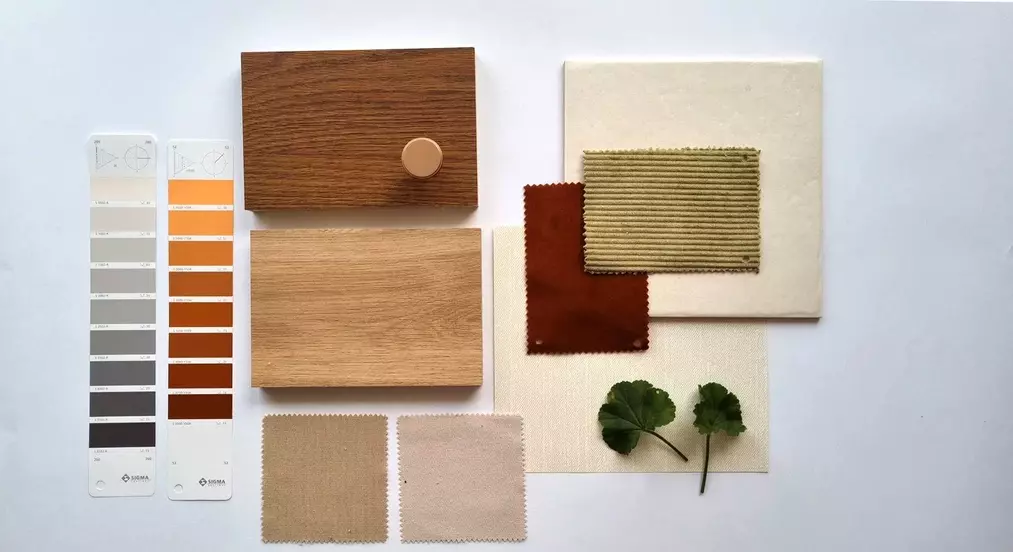
How AI is Changing the Process of Creating Mood Boards in Interior Design
The development of artificial intelligence has opened new possibilities in automating the creation of mood boards. AI can analyze input data, such as textual descriptions or reference images, and generate personalized mood boards in seconds. This not only speeds up the process but also adds an element of surprise and freshness to projects, offering an unlimited source of inspiration.
Best AI Tools for Automatic Generation of Mood Boards
MidJourney – Leveraging Artificial Intelligence for Design Inspiration
MidJourney is an advanced image generator based on artificial intelligence. Simply input a few keywords describing your vision, and the tool will generate unique images matching the description. MidJourney stands out for the speed and high quality of the generated graphics, allowing for experimenting with different styles and moods. It's the perfect solution for designers seeking unconventional inspiration and looking to enrich their mood boards with original elements.
DALL·E by OpenAI – A Revolution in Generating Images for Mood Boards
DALL·E, created by OpenAI, is an AI model capable of generating images based on textual descriptions, even the most abstract ones. With DALL·E, you can transform unconventional ideas into visualizations, creating unique and creative images. This tool is great for adding original elements to your mood board or experimenting with new concepts that are challenging to find in standard image repositories.
AI COURSE – ARTIFICIAL INTELLIGENCE IN INTERIOR DESIGN
Stable Diffusion – Coherence and Quality of Images in Mood Boards through AI
Stable Diffusion is an AI model specializing in generating high-quality images while maintaining style coherence and stability. This tool allows you to create consistent series of images, which is particularly useful when creating mood boards with a uniform style. The high quality and resolution of the graphics make Stable Diffusion an ideal choice for designers striving for professionalism and precision in their presentations.
Mood Board AI – An Application Enhancing Mood Board Creation in Interior Design
Mood Board AI is a dedicated platform that combines traditional mood board creation with the capabilities of artificial intelligence. The intuitive user interface allows for easy addition and arrangement of elements, while AI automatically suggests images and colors that match your concept. This tool also enables real-time collaboration, significantly streamlining the design process and communication among team members.
Other Notable Tools
It's also worth considering tools like Canva with AI features, which enrich the popular platform with intelligent functions to facilitate the creation of personalized mood boards. If you want to create mood boards using this software, check out our interior design course - what is a mood board and how to create it. Experienced designer Marta Piasecka demonstrates how to use this tool and supplements the training program with her valuable professional experience.
Step-by-Step Guide: How to Use AI for Automatic Mood Board Creation
Using AI for creating mood boards is simpler than it may seem. Here are the steps that will help you fully utilize the potential of these tools:
- Define your vision: Consider the mood, style, and elements you want to include in the mood board. Specify the keywords that best describe your concept.
- Choose an AI tool: Decide which tool best suits your needs and skills. You can try out several of them to find the perfect match for you.
- Input the data: Input textual descriptions, keywords, or upload reference images into the chosen tool.
- Generate suggestions: Let AI generate images and elements that match your vision. Don't be afraid to experiment with different settings and descriptions.
- Select and edit: Choose the most suitable elements, make any necessary modifications. You can combine different images and add your details.
- Create the final mood board: Arrange the selected elements into a coherent whole, adding your notes or descriptions to better convey the project's character.
Benefits of Using Artificial Intelligence in Mood Board Design
Using artificial intelligence to create mood boards brings many benefits. First and foremost, it saves time by automating many stages of the process. AI offers access to an unlimited number of inspirations, generating images that are often challenging to find in standard repositories. Personalization is another advantage – you can create unique, tailored projects. Additionally, these tools are usually easy to use, even for individuals without advanced technical skills.
AI COURSE - STABLE DIFFUSION ESSENTIALS
Challenges and Limitations of Using AI in Mood Boards
Despite many advantages, using AI to create mood boards also comes with challenges. The quality of generated content is not always perfect right away – sometimes it takes several iterations to achieve a satisfying result. The wealth of available content can be overwhelming, so it's important to maintain coherence and clarity of vision to prevent the mood board from becoming a collection of random elements.
The Future of Mood Board Creation – How AI Will Revolutionize Interior Design
Artificial intelligence is rapidly evolving, and with it, tools for creating mood boards. In the future, we can expect even better personalization, where AI will better understand individual user preferences. Integration with virtual (VR) and augmented (AR) realities will allow for creating mood boards in a completely new, immersive way. Furthermore, cross-platform collaboration will become easier, enabling smooth integration of AI tools with other design programs. All of this makes the future of AI-driven design look incredibly promising.
Summary
The automatic generation of mood boards using artificial intelligence is a revolution in the world of interior design. Tools such as Stable Diffusion, DALL·E, or Mood Board AI expedite the creation process, offering an unlimited source of inspiration. Using AI allows designers to focus on the creative aspects of their work, leaving the technical details to machines.
If you want to deepen your knowledge about how artificial intelligence can help in the interior design industry, be sure to check out the AI Course - Artificial Intelligence in Interior Design. Open up to new technologies and let AI enhance your creativity!
Read on our blog
-
![Artificial Intelligence Tools in Interior Design]()
Artificial Intelligence Tools in Interior Design
Artificial intelligence is changing interior design by facilitating arrangement, visualization, and gathering inspiration. Discover the best AI tools on the market! -
![How Artificial Intelligence Helps Interior Designers?]()
How Artificial Intelligence Helps Interior Designers?
See how modern AI technologies are changing the approach to design, from automating inventory to creating inspiring visualizations. -
![10 useful SketchUp plugins you must know! Guide]()
10 useful SketchUp plugins you must know! Guide
In this text, you will learn about 10 plugins that will help you work faster and achieve better results in SketchUp. -
![Sketchup - How to create Equipe tile material? Procedural maps in V-Ray.]()
Sketchup - How to create Equipe tile material? Procedural maps in V-Ray.
The current mega-trend for rustic, ceramic tiles continues. Learn how to recreate them in visualizations in SketchUp!



